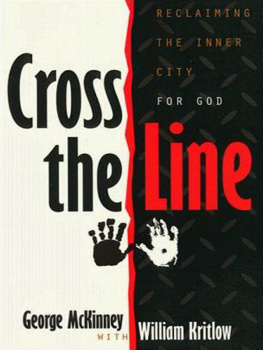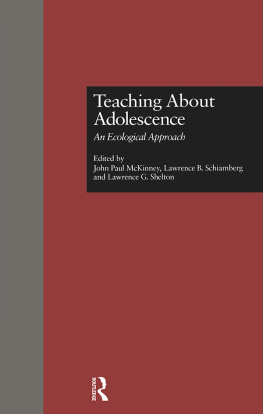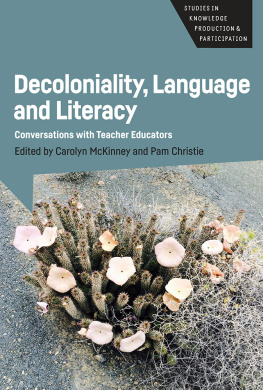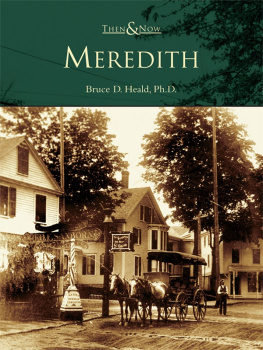Meredith McKinney - Travels with a Writing Brush
Here you can read online Meredith McKinney - Travels with a Writing Brush full text of the book (entire story) in english for free. Download pdf and epub, get meaning, cover and reviews about this ebook. year: 2019, publisher: Penguin Books Ltd, genre: Detective and thriller. Description of the work, (preface) as well as reviews are available. Best literature library LitArk.com created for fans of good reading and offers a wide selection of genres:
Romance novel
Science fiction
Adventure
Detective
Science
History
Home and family
Prose
Art
Politics
Computer
Non-fiction
Religion
Business
Children
Humor
Choose a favorite category and find really read worthwhile books. Enjoy immersion in the world of imagination, feel the emotions of the characters or learn something new for yourself, make an fascinating discovery.
- Book:Travels with a Writing Brush
- Author:
- Publisher:Penguin Books Ltd
- Genre:
- Year:2019
- Rating:3 / 5
- Favourites:Add to favourites
- Your mark:
- 60
- 1
- 2
- 3
- 4
- 5
Travels with a Writing Brush: summary, description and annotation
We offer to read an annotation, description, summary or preface (depends on what the author of the book "Travels with a Writing Brush" wrote himself). If you haven't found the necessary information about the book — write in the comments, we will try to find it.
Travels with a Writing Brush — read online for free the complete book (whole text) full work
Below is the text of the book, divided by pages. System saving the place of the last page read, allows you to conveniently read the book "Travels with a Writing Brush" online for free, without having to search again every time where you left off. Put a bookmark, and you can go to the page where you finished reading at any time.
Font size:
Interval:
Bookmark:

Meredith McKinney

MEREDITH MCKINNEY is a translator of Japanese literature, both contemporary and classical. She lived in Japan for twenty years and is currently Honorary Associate Professor at the Australian National University in Canberra. Her translations for Penguin Classics include The Pillow Book of Sei Shnagon, Essays in Idleness and Hjki by Kenk and Chmei, and two novels by Natsume Sseki.
The scenes of the journeys many places linger on in the heart, and the painful sorrows of nights spent sleeping in mountains and on moors become in turn the seeds of later travellers tales, and a means to consort with Natures wind and cloud.
Matsuo Bash
The great home of the soul is the open road.
D. H. Lawrence
Japan
The Region of the Capital
The Tkaid
Western Honshu and Kyushu
Northern Honshu
The meeting on Mount Utsu
Landscape, attrib. Sessh
The Genji forces descend Hiyodori Ravine
Saigy on his travels
View of Mount Fuji from Suruga Bay
Bash and Sora
Many of the works excerpted or given here in full also exist in other translated versions, and the interested reader is encouraged to seek these out for different perspectives on the works (see ). My own translations attempt to honour the literary qualities of the writing, while simultaneously aiming as far as possible to remain faithful to the linguistic level of the text. Although Japanese underwent considerable changes over the course of the thousand years covered here, its literary written language remained essentially remarkably stable. It valued elegance and suggestiveness, and although English translation inevitably requires clarifying much that is left ambiguous or implicit in the Japanese, I have tried to suggest these qualities in my choice of language and style. Rhythm, balance, phrasing and flow are all important aspects of much of this writing which I have tried in various ways to reproduce.
Occasionally the prose in these works can intensify and take on many of the qualities of poetry, with almost incantatory variations on a 5/7 syllabic rhythm. Since syllable count means little to the English ear, and goes quite unnoticed in prose, I have translated these passages with particular attention to cadence and indicated their phrasing with spaced prose. One of the characteristics of these heightened passages in particular is a sinuous flow that blurs syntactical connections and slides seamlessly between sentences, an effect that the translation also attempts to suggest within the limits of natural English.
The pervasive presence of allusion plays a vital role in classical Japanese literary prose as well as in poetry, adding depth and resonance to the textual surface and serving to bind the work into the wider tradition. It provides a kind of enriching harmonic accompaniment to the single melodic line of the textual meaning, which can seem flat without it. Allusion assumes a readership alert to the echoes of other works, so its full effect cannot be reproduced in translation. Its presence should not be ignored, however. Where allusion becomes overt quotation, I have explained it in a note. More generally, I use italics to point up some (but by no means all) of the passing allusive echoes embedded in the prose, in the hope that readers will register the pleasure of its presence if not its full force.
Poems, of course, provide particular challenges for a translator. Classical Japanese poetry is notoriously resistant to translation rhythm, a delight in punning word play, the crucial role of allusion, pivot words and the syntactic folding together of meaning, concision, ambiguity, linguistic nuance and more besides: all these are virtually impossible to reproduce. The translator must simply hope that something at least of the spirit of the poem is conveyed in the translation, and perhaps a little of its elegance. Although the structure of Japanese poetry depends on syllable count rather than line division, I follow the general custom of using line division to shape and add tension, to slow the eye and to signal it as poetry.
A final word about orthography. The pronunciation of Japanese changed continuously throughout the thousand years covered by this book. Rather than attempt to convey the nuances of these complex shifts, the Japanese transcriptions of the poems follow the ahistorical but straightforward rules of modern Japanese romanization.
Bones on the Wayside: Bash bunsh, Shinch Nihon Koten Shsei vol. 17, Shinchsha, 1978, ed. Toyama Susumu
The Death of Sgi: Chsei nikki kiksh, Nihon Koten Bungaku Taikei vol. 51, Iwanami Shoten, ed. Fukuda Hideichi et al.
Diary of the Waning Moon: Chsei nikki kiksh, Nihon Koten Bungaku Zensh vol. 48, Shgakukan, 1994, ed. Nagasaki Ken et al.
Dust Dancing on the Rafters: Ryjin hish, Shinch Nihon Koten Shsei vol. 31, Shinchsha, 1979, ed. Enoki Katsur
A Gift for the Capital: Chsei nikki kiksh, Nihon Koten Bungaku Taikei vol. 51, Iwanami Shoten, ed. Fukuda Hideichi et al.
Ionushis Pilgrimage to Kumano: Ionushi seik, Kokken Shuppan, 2002, ed. Masubuchi Katsuichi
The Ise Tales: Ise monogatari, Shinch Nihon Koten Shsei vol. 2, Shinchsha, 1978, ed. Watanabe Minoru
Journal of the Kyushu Road: Chsei nikki kiksh, Nihon Koten Bungaku Zensh vol. 48, Shgakukan, 1994, ed. Nagasaki Ken et al.
Journal of the Tsukushi Road: Chsei nikki kiksh, Nihon Koten Bungaku Taikei vol. 51, Iwanami Shoten, ed. Fukuda Hideichi et al.
Journey along the Sea Road: Chsei nikki kiksh, Nihon Koten Bungaku Zensh vol. 48, Shgakukan, 1994, ed. Nagasaki Ken et al.
Journey to Shirakawa: Chsei nikki kik bungaku zenhyshaku shsei, Bensei Shuppan, 20002004, ed. Kishida Yoriko
Journey to the East: Chsei nikki kiksh, Nihon Koten Bungaku Zensh vol. 48, Shgakukan, 1994, ed. Nagasaki Ken et al.
Manysh: Shinch Nihon Koten Shsei vols. 6, 21, 41, 55, 66, Shinchsha, 197884, ed. Aoki Takako et al.
The Narrow Road of Oku: Bash bunsh, Shinch Nihon Koten Shsei vol. 17, Shinchsha, 1978, ed. Toyama Susumu
Nin: Ninsh chshaku, Shikash Shkaku Skan vol. 3, Kichbon Kankkai, 1992, ed. Kawamura Teruo
Pilgrimage to Kumano: Chsei kinsei kaysh, Nihon Koten Bungaku Taikei vol. 44, Iwanami Shoten, 1959, ed. Shinma Shinichi et al.
The Pillow Book: Makura no sshi, Shgakukan, 1997, ed. Matsuo Satoshi et al.
Sarashina Diary: Tosa nikki, Sarashina Nikki, Shgakukan, 2008, ed. Kikuchi Yasuhiko et al.
Senjsh: Senjsh, fsha, 1988, ed. Kojima Takayuki et al.
Sumida River: Ykyokush (ch), Shinch Nihon Koten Shsei vol. 73, Shinchsha, 1986, ed. It Masayoshi
The Tale of Saigy: Saigy monogatari, Kdansha, 1981, ed. Kuwabara Hiroshi
The Tale of the Heike: Heike monogatari,
Next pageFont size:
Interval:
Bookmark:
Similar books «Travels with a Writing Brush»
Look at similar books to Travels with a Writing Brush. We have selected literature similar in name and meaning in the hope of providing readers with more options to find new, interesting, not yet read works.
Discussion, reviews of the book Travels with a Writing Brush and just readers' own opinions. Leave your comments, write what you think about the work, its meaning or the main characters. Specify what exactly you liked and what you didn't like, and why you think so.













